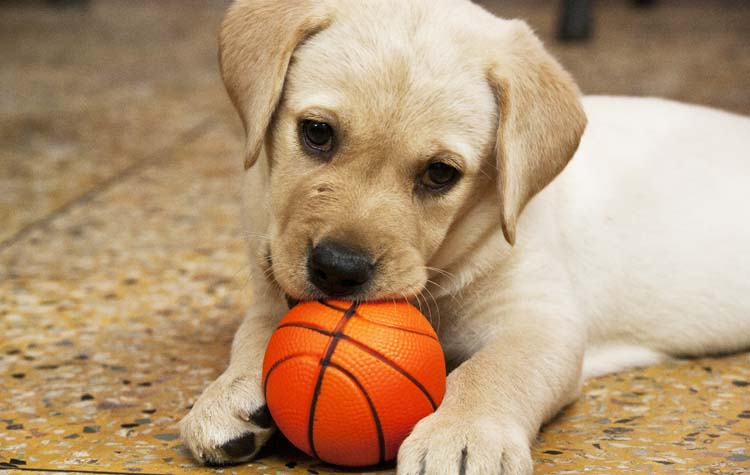Lifestyle – Just like a human newborn, your new puppy communicates many of his needs by crying. But what do you do if you’ve met your puppy’s basic needs and he continues to cry and whimper?
Dr. Carolyn Lincoln, a Cleveland-based veterinarian who specializes in behavior medicine, says puppies have to make the difficult adjustment of being away from their mother and littermates, so it’s important to give your puppy time to adjust. “Your dog isn’t trying to annoy you. He just has a need and he’ll continue to cry until it’s met.”
But Dr. Jennifer Coates, veterinary advisor with petMD, cautions that how you respond to puppy crying is important. “How you act when a puppy is crying can dramatically affect future behavior,” she says. “Knowing how and when to respond is key.”
Why Do Puppies Cry?
The best way to get your puppy to stop crying is to get to the root of the problem. Here are some common reasons behind why your puppy is crying and how you can help.
Frequent whimpering and crying could be signs that your puppy is sick, says Lincoln. Some symptoms to be on the lookout for include lethargy, a loss of appetite, diarrhea, vomiting, dizziness or an increased breathing rate. Excessive licking, biting or scratching in one area could be signs of an allergy, infection, parasites or other skin problems. If your normally affectionate pup becomes anti-social and doesn’t want to be touched or runs away or hides from you, he could be in pain or suffering from an injury.
How to help: It’s important to get your puppy to the vet as soon as possible if you notice any of these symptoms. “Puppies don’t have the reserves of adult dogs, so taking a ‘wait-and-see’ approach is riskier in younger pets,” warns Coates.
Loneliness
Dogs are social animals. But puppies can be especially needy as they adjust to being separated from their mother and siblings, says Lincoln.
How to help: Lincoln recommends reassuring your puppy by keeping him near you—even during busy times of the day. She suggests strategically placing crates throughout your house in high traffic areas such as the family room, bedroom, or kitchen. For instance, if you need to focus on fixing dinner in the kitchen your puppy can hang out next to you in his crate. In most cases he just needs to feel your presence and be part of the action.
“If you need to be more mobile you can also tie your puppy to your waist with a leash and attach it to a harness so you’ll always know where he is,” Lincoln says.
Coates agrees that keeping your puppy nearby is beneficial. “This will let your puppy benefit from your physical presence but reduce the risk of accidents or other problems when most of your attention has to be elsewhere,” she adds.
Fear
As your puppy explores his new world, his behavior may range from being playful and daring to being withdrawn and fearful. He may whimper and cower in the corner or under furniture instead of greeting visitors who don’t look familiar to him. He may run away from you when you introduce an object such as an umbrella, backpack or hat.
Lincolns refers to these periodic behavioral displays as “fear periods.” During these times puppies can suddenly become afraid of new things or of things that didn’t previously scare them.
This typically happens between 8-12 weeks, at 4-9 months, and again at 1 ½-2 years, says Lincoln. “We’re not sure why but it could be because a puppy’s brain has growth spurts,” she adds. “Or, it may be a survival instinct, as puppies begin to separate from their mom, they learn to be more cautious.”
How to help: This can be normal behavior for a puppy, but pet parents should pay close attention to their puppy’s body language. If he is avoiding eye contact or if his ears are back or his tail is down he’s telling you he’s afraid, says Lincoln.
Dr. Coates advises that if a puppy is showing signs of fear, he or she needs to be removed from that situation immediately. “Fears can become ingrained when a puppy is exposed to a fearful situation over and over again.”
To promote confidence, Coates recommends exposing your puppy at a later time with a “less intense version of the experience.” For example, if a puppy barks and backs away when approached by a stranger, repeat the scenario the next day keeping a greater distance from the stranger and allowing the puppy to approach the person rather than the other way around, says Coates. If the fearful behavior persists or worsens, talk to your veterinarian.
Hunger
If your puppy’s cries occur primarily in the time leading up to meals, it could be a sign of hunger.
Lincoln says it’s common for puppies to experience an increase or decrease in their appetite as part of normal biological changes. “A puppy’s growth phase is not always linear,” she says. “So you can’t always go with the directions on the food package because each puppy is different.”
How to help: If you suspect your puppy isn’t getting enough to eat, consult with your vet about adjusting his diet, says Lincoln. Coates agrees and adds, “rather than focusing on the amount in the bowl, it is sometimes better to pay closer attention to your puppy’s body condition. If they’re looking a little thin, increase the amount of food you are offering. If they’re getting chubby, cut back a bit.”
Boredom
Your puppy may excessively bark and cry because he’s bored and has a lot of pent up energy. “Puppies need mental as well as physical exercise,” Lincoln says. All puppies need to expend energy and have mental stimulation at various times throughout the day.
How to help: Lincoln says that exercise and playtime is an important part of your puppy’s day. But in addition to ensuring your puppy gets regular exercise and play with you, you can try adding some food puzzles for those times when you have to be gone. Or try a game of hide and seek, where your puppy searches around the house to find his food. “There’s nothing that says you have to feed your puppy out of a bowl,” says Lincoln.
Lincoln also likes to fill a muffin tin with kibble then top each cup with a tennis ball. Your pup can’t indulge in the treat until he gets the ball out. “It’s a challenge because the ball fits snugly. It’s also a great way to develop a good relationship with your puppy while entertaining him.”
They Want Affection
Puppies also need connection and affection. Your dog may wait all day to interact with family members who’ve been gone.
“They’ll cry if they can’t get to someone they want to be with like when they see a child come home from school. They want so badly to greet and spend time with them,” says Lincoln.
How to help: Lincoln says that it’s important that you acknowledge your puppy when you walk in the door and be present and pay attention when you are spending time with your puppy. “It’s important to spend even just a minute greeting your puppy when you walk in the door—that can be enough to calm him down,” she explains.
But Dr. Coates cautions that you should be deciding when your puppy gets your attention, not the other way around. “Puppies who cry and demand attention when their needs have been met should be ignored,” she says. “Once they are quiet, you can give them all the attention you want. Reward good behavior, not bad behavior, with your attention.”
Don’t Yell at a Crying Puppy
The more your puppy cries the more you may be tempted to yell at him. “None of it will help. In fact, it just makes it worse. He may stop if you punish him but it just confuses him and ultimately hurts your relationship,” Lincoln says.
Coates notes that some puppies seem to prefer negative attention to no attention at all. “By yelling at a crying puppy you might actually be reinforcing the behavior you’re hoping to stop,” she says.
There’s nothing wrong with taking a “time out” when you’re feeling frustrated, Coates adds. Make sure your puppy is in a crate or other safe location, then take a walk outside to calm down until you can address the situation in a more effective manner.
By Katherine Tolford, From PetMD


